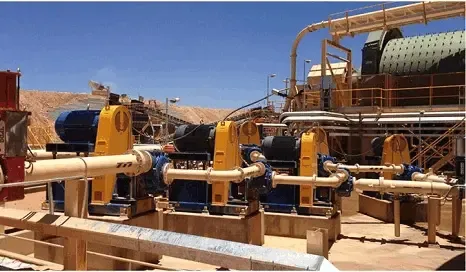
-
 Afrikaans
Afrikaans -
 Albanian
Albanian -
 Amharic
Amharic -
 Arabic
Arabic -
 Armenian
Armenian -
 Azerbaijani
Azerbaijani -
 Basque
Basque -
 Belarusian
Belarusian -
 Bengali
Bengali -
 Bosnian
Bosnian -
 Bulgarian
Bulgarian -
 Catalan
Catalan -
 Cebuano
Cebuano -
 Corsican
Corsican -
 Croatian
Croatian -
 Czech
Czech -
 Danish
Danish -
 Dutch
Dutch -
 English
English -
 Esperanto
Esperanto -
 Estonian
Estonian -
 Finnish
Finnish -
 French
French -
 Frisian
Frisian -
 Galician
Galician -
 Georgian
Georgian -
 German
German -
 Greek
Greek -
 Gujarati
Gujarati -
 Haitian Creole
Haitian Creole -
 hausa
hausa -
 hawaiian
hawaiian -
 Hebrew
Hebrew -
 Hindi
Hindi -
 Miao
Miao -
 Hungarian
Hungarian -
 Icelandic
Icelandic -
 igbo
igbo -
 Indonesian
Indonesian -
 irish
irish -
 Italian
Italian -
 Japanese
Japanese -
 Javanese
Javanese -
 Kannada
Kannada -
 kazakh
kazakh -
 Khmer
Khmer -
 Rwandese
Rwandese -
 Korean
Korean -
 Kurdish
Kurdish -
 Kyrgyz
Kyrgyz -
 Lao
Lao -
 Latin
Latin -
 Latvian
Latvian -
 Lithuanian
Lithuanian -
 Luxembourgish
Luxembourgish -
 Macedonian
Macedonian -
 Malgashi
Malgashi -
 Malay
Malay -
 Malayalam
Malayalam -
 Maltese
Maltese -
 Maori
Maori -
 Marathi
Marathi -
 Mongolian
Mongolian -
 Myanmar
Myanmar -
 Nepali
Nepali -
 Norwegian
Norwegian -
 Norwegian
Norwegian -
 Occitan
Occitan -
 Pashto
Pashto -
 Persian
Persian -
 Polish
Polish -
 Portuguese
Portuguese -
 Punjabi
Punjabi -
 Romanian
Romanian -
 Russian
Russian -
 Samoan
Samoan -
 Scottish Gaelic
Scottish Gaelic -
 Serbian
Serbian -
 Sesotho
Sesotho -
 Shona
Shona -
 Sindhi
Sindhi -
 Sinhala
Sinhala -
 Slovak
Slovak -
 Slovenian
Slovenian -
 Somali
Somali -
 Spanish
Spanish -
 Sundanese
Sundanese -
 Swahili
Swahili -
 Swedish
Swedish -
 Tagalog
Tagalog -
 Tajik
Tajik -
 Tamil
Tamil -
 Tatar
Tatar -
 Telugu
Telugu -
 Thai
Thai -
 Turkish
Turkish -
 Turkmen
Turkmen -
 Ukrainian
Ukrainian -
 Urdu
Urdu -
 Uighur
Uighur -
 Uzbek
Uzbek -
 Vietnamese
Vietnamese -
 Welsh
Welsh -
 Bantu
Bantu -
 Yiddish
Yiddish -
 Yoruba
Yoruba -
 Zulu
Zulu


Dec . 04, 2024 13:28 Back to list
Cable Wire Cutting Techniques and Best Practices for Effective Results
The Impact of Cable and Wire Cuts on Communication Networks
In today's digital age, the backbone of our communication infrastructure relies significantly on various forms of cabling and wiring. From telephone lines to internet connectivity, the cables that link us play a vital role in ensuring smooth communication across continents. However, incidents of cable and wire cuts have been a persistent issue, with implications that are both immediate and far-reaching. This article delves into the causes and consequences of cable and wire cuts, along with potential solutions to mitigate these challenges.
Causes of Cable and Wire Cuts
Cable cuts can occur due to several factors, ranging from natural disasters to human activities. One of the most common causes is construction work. As cities expand and infrastructure projects take place, accidental damage often occurs when heavy machinery disturbs underground cabling. In many cases, workers might not be aware of the presence of these cables, leading to unintentional disruptions.
Natural elements, such as severe weather events, can also play a significant role in cable damage. Storms, floods, and earthquakes can uproot or break cables, causing extensive interruptions in service. Additionally, wildlife, like rodents and birds, can chew through insulation, leading to compromised connectivity.
In some unfortunate instances, cable cuts are the result of deliberate actions, such as vandalism or theft. In areas where valuable materials, like copper, are unprotected, thieves may target utility poles to strip wiring for these metals. Such acts not only disrupt services but also impose significant costs for repairs and replacements.
Consequences of Cable Cuts
The repercussions of cable and wire cuts can be immediate and profound. For individuals, this could mean loss of internet access, interrupted phone services, or halted operations for businesses dependent on digital communication. In severe cases, entire regions may experience outages, crippling businesses and services that rely on smooth operations.
cable wire cut

Moreover, the impact extends beyond just communication. Emergency services, healthcare facilities, and essential services all depend on reliable connectivity. When cables are cut, these vital systems can face challenges, potentially compromising public safety and health outcomes.
Economically, the implications can be staggering. Companies may suffer financial losses due to downtime, and the costs associated with repairs can be exorbitant. Furthermore, repeated incidents can deter investors and businesses from certain areas deemed unreliable due to ongoing connectivity issues.
Mitigation Strategies
Addressing the issue of cable and wire cuts necessitates a multifaceted approach. Firstly, it is crucial to ensure that all construction work is conducted with utility maps at hand, allowing workers to identify the location of existing cables before commencing digging or drilling. Mandating the use of ‘call before you dig’ services can also prove beneficial in preventing accidental damage.
Infrastructure improvements play a critical role as well. Burying cables deeper underground or utilizing more robust materials can minimize the impact of natural disasters and reduce the likelihood of vandalism. Communities should also consider reinforcing existing cables with protective casings to deter animal interference.
Public awareness campaigns can inform local residents and businesses about the importance of safeguarding communication infrastructure, encouraging them to report any suspicious activities or damages promptly.
Conclusion
The issue of cable and wire cuts is a complex challenge that requires collective awareness and concerted actions from multiple stakeholders. By understanding the causes and consequences of these disruptions, we can foster a culture of prevention and resilience, ensuring that our communication networks remain robust and reliable in an increasingly connected world. As we advance into the future, prioritizing the integrity of our communication infrastructure will be paramount to sustaining our modern lifestyle.
Latest news
What Are Construction Tools and How Are They Used?
NewsJul.11,2025
Professional-Grade Duct Rodding Tools for Superior Cable Installation
NewsJul.11,2025
Enhancing Safety and Efficiency with Modern Hot Stick Solutions
NewsJul.11,2025
Empowering Cable Installation with Advanced Rodder Solutions
NewsJul.11,2025
Elevate Your Cable Installation Projects with Cable Pulling Tools
NewsJul.11,2025
Efficient Cable Handling Solutions: Cable Rollers for Sale
NewsJul.11,2025











